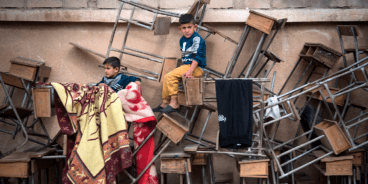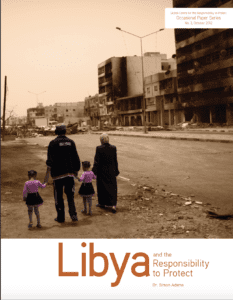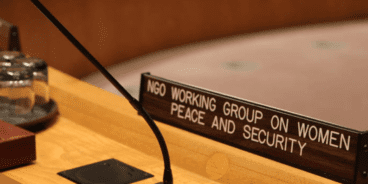
Libya and the Responsibility to Protect
For those concerned with the international community’s Responsibility to Protect (R2P), the implementation of United Nations (UN) Security Council Resolution 1973, which authorized a military intervention in Libya, has caused much controversy and dissension.
From the start of Muammar al-Qaddafi’s violent crackdown against protesters in February 2011, R2P informed the Security Council’s response. Adopted at the UN World Summit in 2005 and intended as an antidote to the inaction that had plagued the UN during the genocides in Cambodia, Rwanda and Srebrenica, R2P represents a solemn commitment by the international community to never again be passive spectators to genocide, war crimes, ethnic cleansing or crimes against humanity. While R2P played some role in preventing an escalation of deadly ethnic conflict in Kenya during 2007, it had never been utilized to mobilize the Security Council to take coercive action against a UN member state before.
It is for this reason that Resolution 1970 of 26 February 2011, which framed the Security Council’s response in terms of R2P, was hailed as a groundbreaking diplomatic moment. Similarly, Resolution 1973, which followed on 17 March, was initially seen as a timely and proportional intervention to ensure the protection of civilians at grave risk of mass atrocities. It was a regrettable, but necessary measure of last resort.
However, over the course of the following months the debate regarding the meaning of the resolutions and their implementation became increasingly bitter. Some argued that the Libyan intervention had been hijacked by partisans of “regime change.” The alternative view was that “all necessary measures” were being used by the NATO-led alliance to prevent atrocities and protect civilians – nothing more and certainly nothing less. Questions of proportionality and motivation began to undermine the unanimity that initially existed.
The fall of Qaddafi’s government in August 2011, the internecine conflicts between rebel militias and the challenges of rebuilding from the ruins of civil war mean that Libya continues to be a talisman for debates over R2P. Moreover, the Security Council’s inability to take comprehensive action with regard to mass atrocities in nearby Syria has widened the divide between supporters and critics of the implementation of R2P in Libya.
This occasional paper from the Global Centre for the Responsibility to Protect analyzes the debates that have shaped interpretations of the intervention in Libya and argues that R2P played a crucial role in stopping mass atrocities and saving lives.
Download PDF Version:
Related Content



